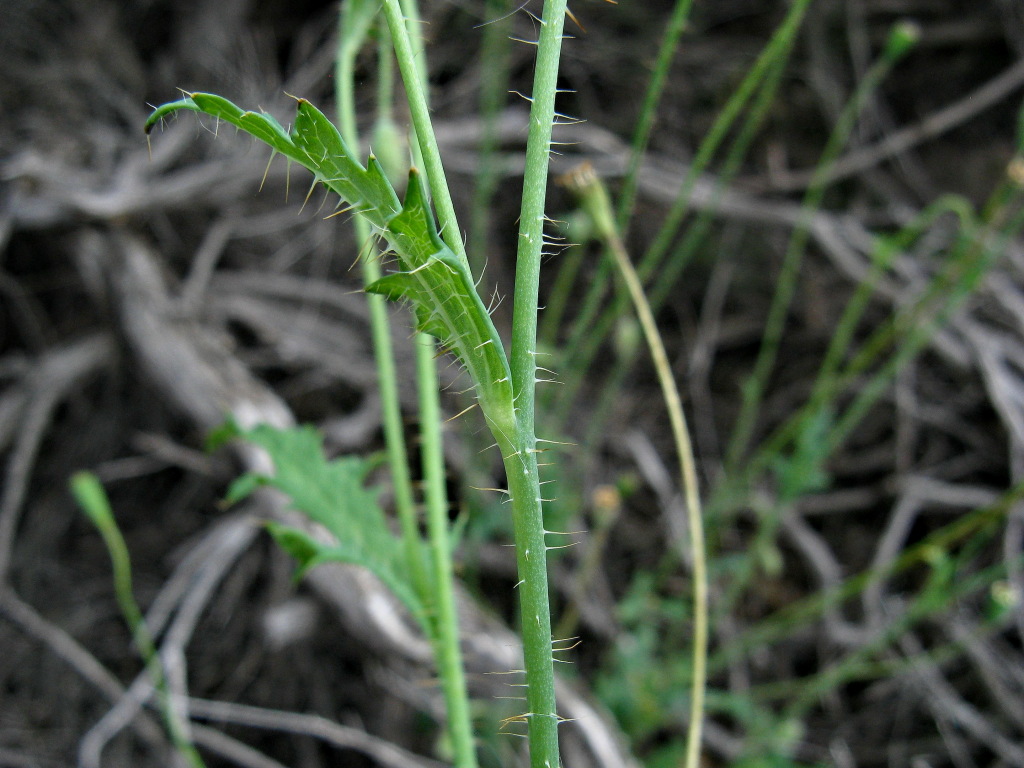Papaver aculeatum
Thumb.Plants annual, caulescent, to 1 m high, patent-setose throughout and also patent-spinose on axes and leaf veins, lobes and tips, spines to 6 mm long; stems simple or usually branched. Leaves to 30 cm long, the lower indistinctly petiolate or sessile, the upper sessile; blades ovate to obovate, 1–2-pinnately lobed, the upper sometimes with somewhat stem-clasping bases. Petals to 25 mm long, orange-red or -pink, without basal spot; filaments yellow, filiform, anthers yellow; stigmas 5–11, disc ± flat. Capsules sessile, clavate to obovoid, to 25 mm long, ribbed, glabrous or sparsely setose near apex, tuberculate along ribs. Flowers Sep.–Jan.
LoM, MuM, Wim, GleP, RobP, GipP, CVU, NIS, EGL, EGU. Also naturalised SA, Qld, NSW, Tas. (King Is. and Flinders Is.). Native to southern Africa. Chiefly in the north-west (e.g. Hattah Lakes, Lake Albacutya, Wyperfeld National Park etc.) and rain-shadow areas of East Gippsland (Suggan Buggan, Willis), with a few scattered occurrences in the south. Occurs in open areas and woodlands along roads, streams, and shores, usually in sand or sandy loam.
Considering morphological, cytological, and phytogeographic evidence, Kadereit (1988) concluded that Papaver aculeatum probably is not native in Australia, but was introduced from southern Africa soon after white settlement.
Kiger, R.W. (1996). Papaver. In: Walsh, N.G.; Entwisle, T.J., Flora of Victoria Vol. 3, Dicotyledons Winteraceae to Myrtaceae, pp. 69–72. Inkata Press, Melbourne.
 Spinning
Spinning



